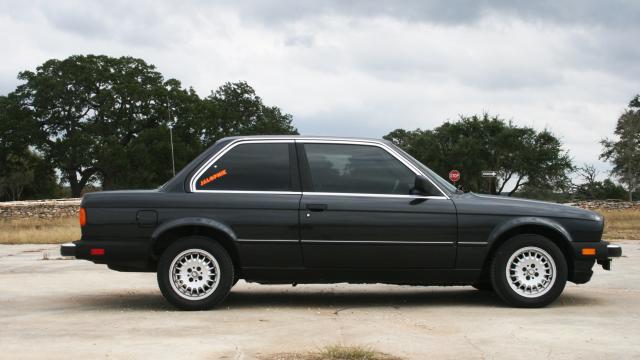Admit it: you’ve done this at least once. Curiosity on Craigslist has led you to search for one of the internet’s most loved — some would say overhyped — used cars, the E30 BMW 3 Series from the 1980s and early ’90s. And then you found a truly beautiful one. And then you saw that one letter at the end of its numerical name that serves as an instant disqualifier: e.
Suddenly, your dreams of old-school BMW rear-wheel drive fun, complete with a stick shift and everything, are wrecked, because instead you feel you’d consigned to a life of low-revving misery and contempt from your fellow enthusiasts.
I’m here to tell you that’s all wrong. Depending on what you want to do with the car, the engine that puts the e in the 325e — or the same engine in the bigger 5 Series, where it was designated the 528e — is better than you think.
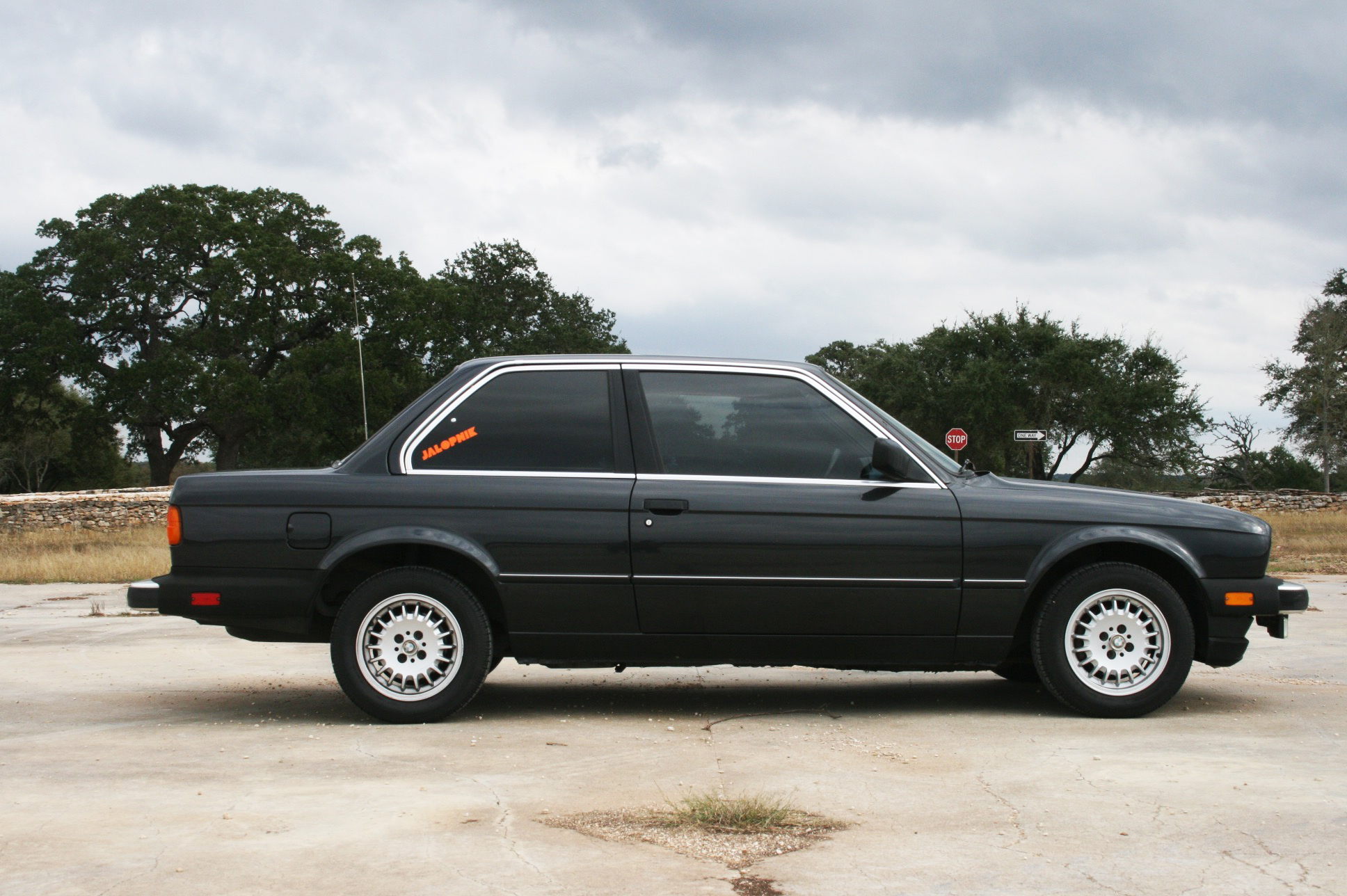
The E30 debuted in the U.S. in 1984, replacing the E21, the first 3 Series that has aged well in the looks department but is largely considered inferior to the legendary 2002 that preceded it or the one that came after. The E30 was sold in two flavours at first in America: the four-cylinder 318i, and the six-cylinder 325e.
Other variants like the 325is and M3 came later, and we’re just talking about the U.S. market for now. That’s important.
BMW has always been famous for its smooth, powerful, high-revving inline-sixes, but the 325e is kind of lacking in the last two departments. It’s powered by what is called the “Eta” engine, a stroked-out 2.7-litre variant of the famous M20 inline-six. The e stands for efficiency, and Eta is Greek for the same. It’s all very logical.
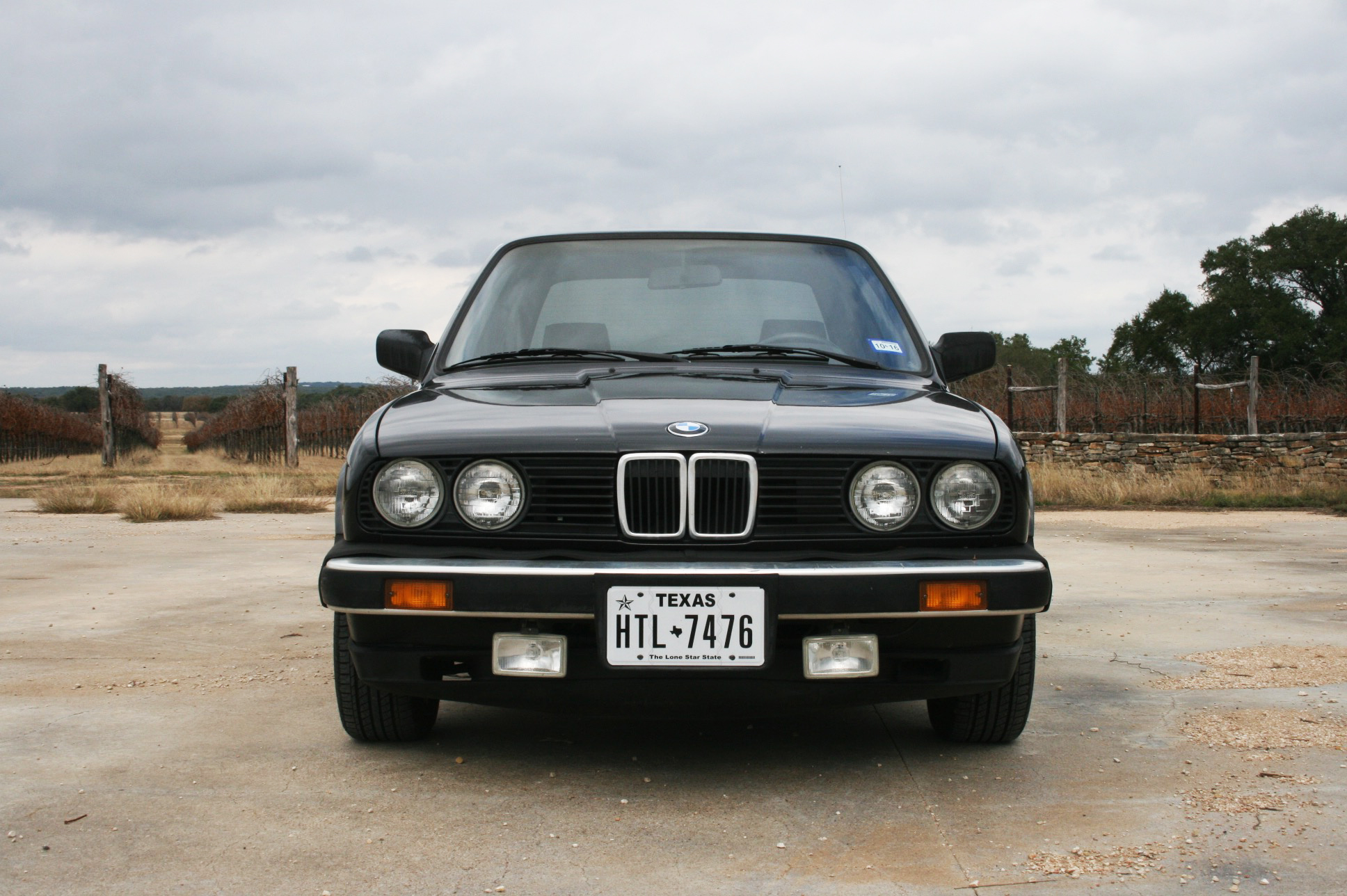
Curbside Classic notes that the Eta engine was designed to be the kind of car BMW figured Americans wanted at the time: low-revving, high on torque, low on horsepower, not unlike a V8 from the era. It was also meant to be a more fuel-efficient option. It’s rated at an unusual 121 horsepower and 78kg-ft of torque.
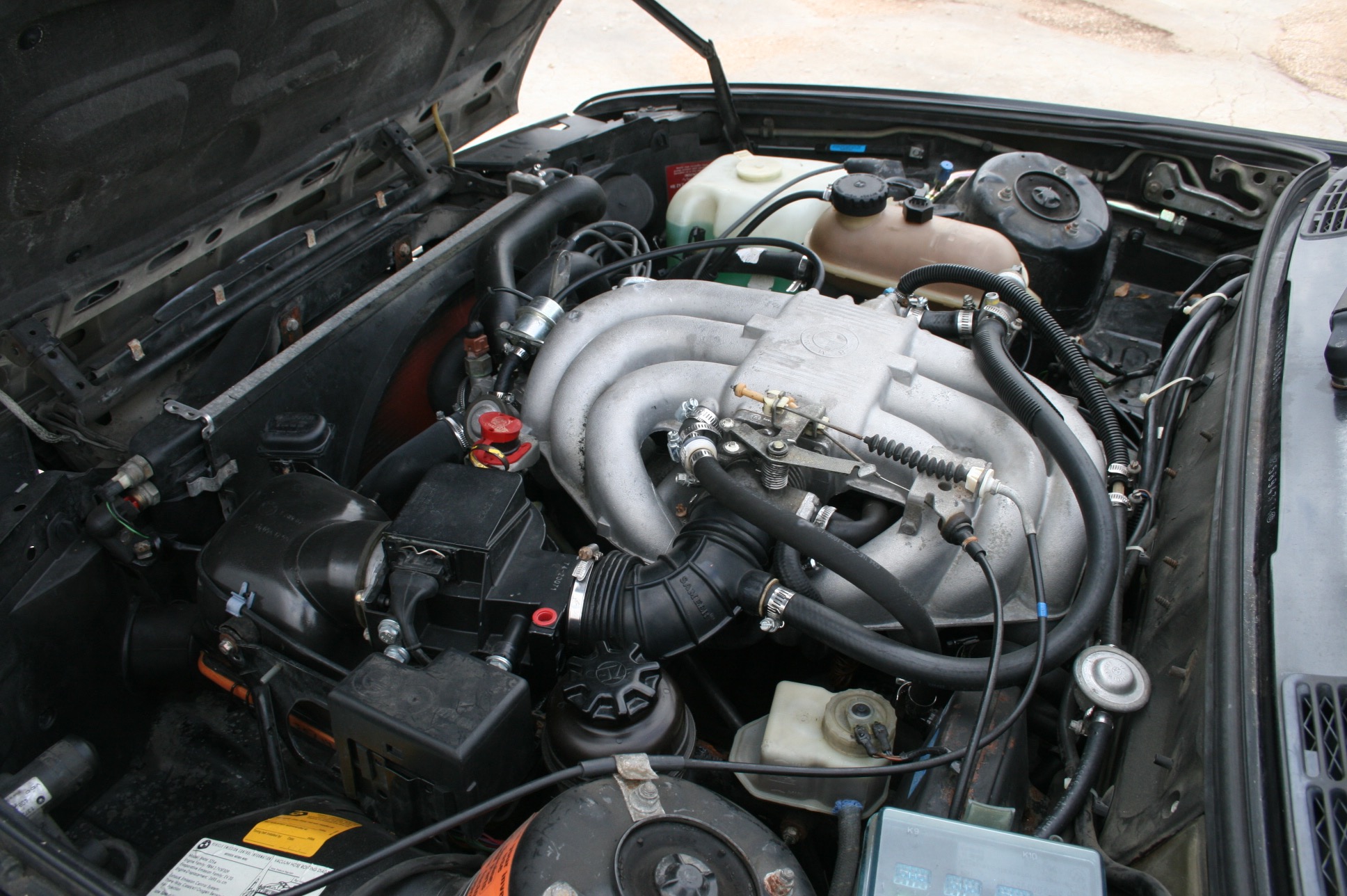
The tradeoff is in how BMW went about this, and in the end those revs really were low: the car’s redline tops off right around 4,700 RPM, well before other BMW inline-sixes — especially the basket case M3 that came later — reach their happy place. I’ll let the wonderful E30 Zone explain the technical details:
In the Eta engine, this head was modified, using only four cam bearings rather than seven, very soft valve springs, short duration cam, and small inlet manifold ports. This gave the characteristics of very low revving, and very low fuel consumption, but also very little power. The 200 Eta head was mounted on a long stroke, straight six block. This made an ideal pairing with the head, and despite the lack of power and engine speed, the long stroke produced a great deal of torque across a very wide power band.
In other words, you get smoothness, a flat torque curve that starts out real low, but all the fun ends at an abruptly low cutoff. For this reason, the 325e is considered rather undesirable among enthusiasts, who generally ignore it in favour of the more conventional 325i that redlines closer to 7,000 RPM. I’d wager it’s BMW’s most unloved engine, besides maybe the emissions-choked four-cylinder dog that went into the E21.
After all, does this low-revving motor really belong in a celebrated driver’s car like the E30?
Sure it does. I’ve certainly been happy with mine. I’ll tell you why.
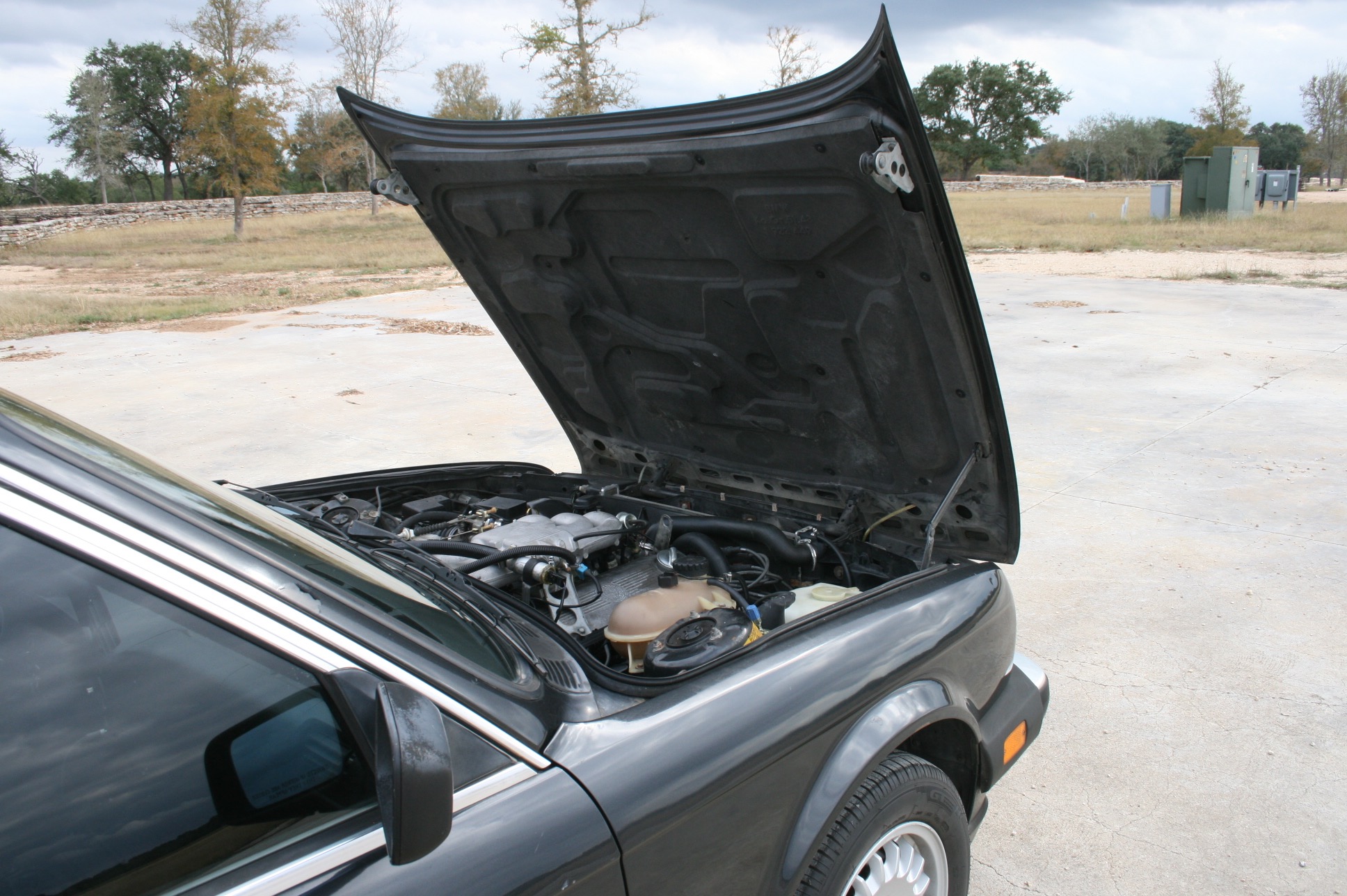
Sun’s out, guns out.
I bought this 1985 325e off Craigslist last fall for a couple grand, having stumbled onto an example in surprisingly good condition at 214,043km. Like any car its age, it’s not perfect. It can be finicky to start sometimes. The air conditioning doesn’t work, although I need to deal with that in the coming months before the Texas heat is in full effect again. It’s got the typical cracks in the dash and a few in the leather seats. The temperature gauge doesn’t work, but I have theories on that.
At the time I had been looking for NA Miatas or maybe a Z31 300ZX, but when I stumbled onto this car and went for a test drive on a whim, I was won over pretty much right away. Despite the e in its name, over the past few months of daily-driving and wrenching, I’ve come to love its boxy ’80s style, practicality, great shifter, driving dynamics, and yes, even the unique character of its engine.
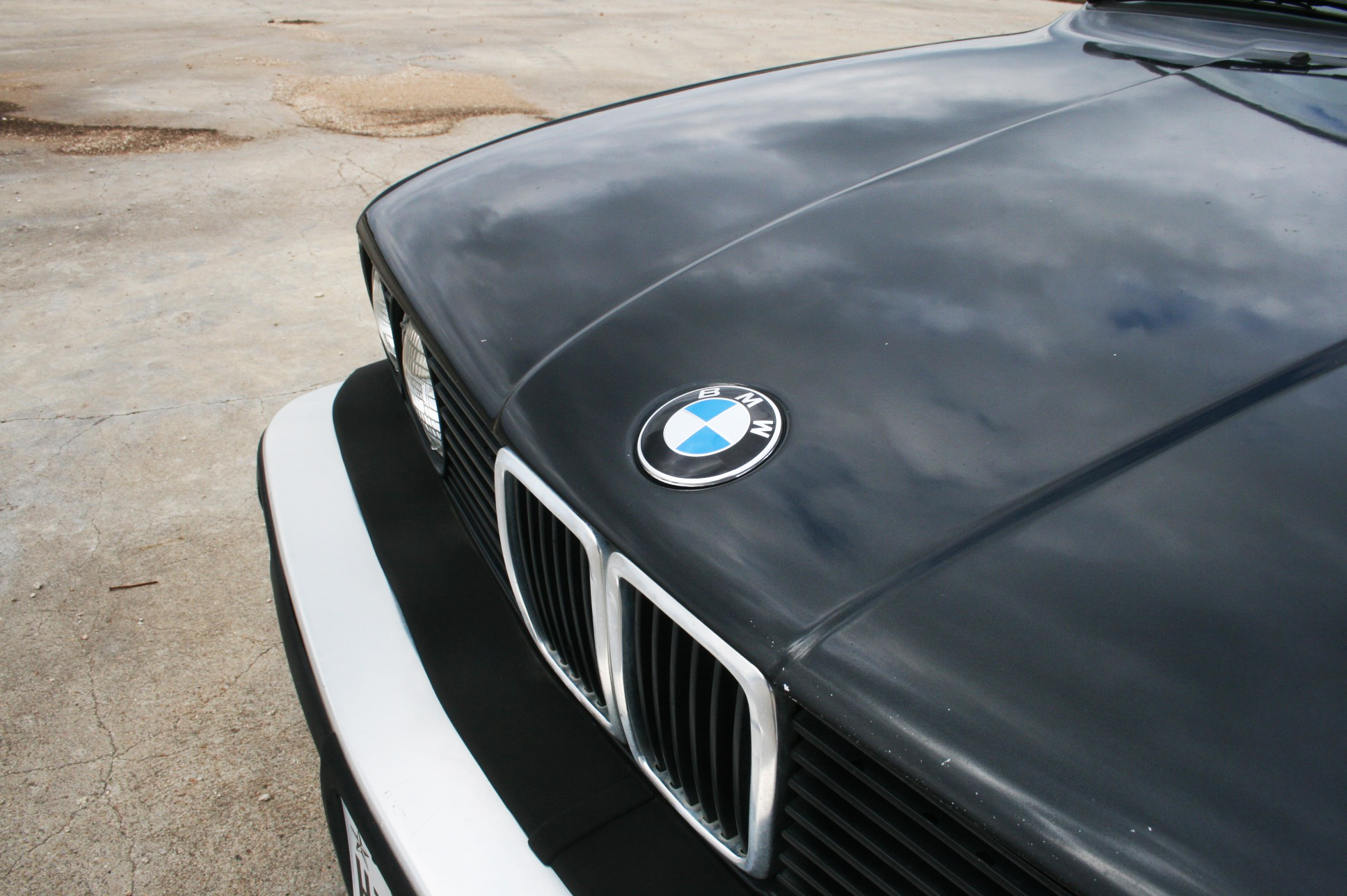
I don’t have the spec sheet, but as near as I can tell, this 325e was one of the more loaded 3 Series models you could get in 1985. Mine has the leather sport seats, the onboard trip computer, a five-speed manual, a sunroof (which amazingly still works, unlike the last Mini Cooper I had) and a few other options that make it surprisingly modern despite being 32 years old.
If you solve for inflation, it would have been about a $US50,000 ($65,101) car in its day. Hailing from that lost era of over-engineered German cars, it is possibly the most well-built car I’ve ever owned. I have no doubt that it was among the best cars you could buy at the time, as the 3 Series often is. The only thing my car really lacks is the optional limited-slip differential.
Who bought a 325e back in the day? Until the 325i came out, my guess is buyers who didn’t want a four-cylinder motor in a luxury car (this is the reason the first M3 didn’t sell well in its time) and buyers who wanted some fun in a nice car on their commute to work but probably weren’t likely to go ape shit behind the wheel. I imagine this car was owned by some well-paid professor or mid-level businessperson who wanted to have a good time rowing his or her own gears on the way to work, but wasn’t too inclined to do a weekend track day.
At the same time, by some accounts the BMW faithful balked at this engine back in the day, and I suppose I can’t blame them. I picked this up because it was fun and different and in good shape and cheap; I can’t imagine wanting to spend a bunch of money on a 325e had I been a new car buyer at the time.
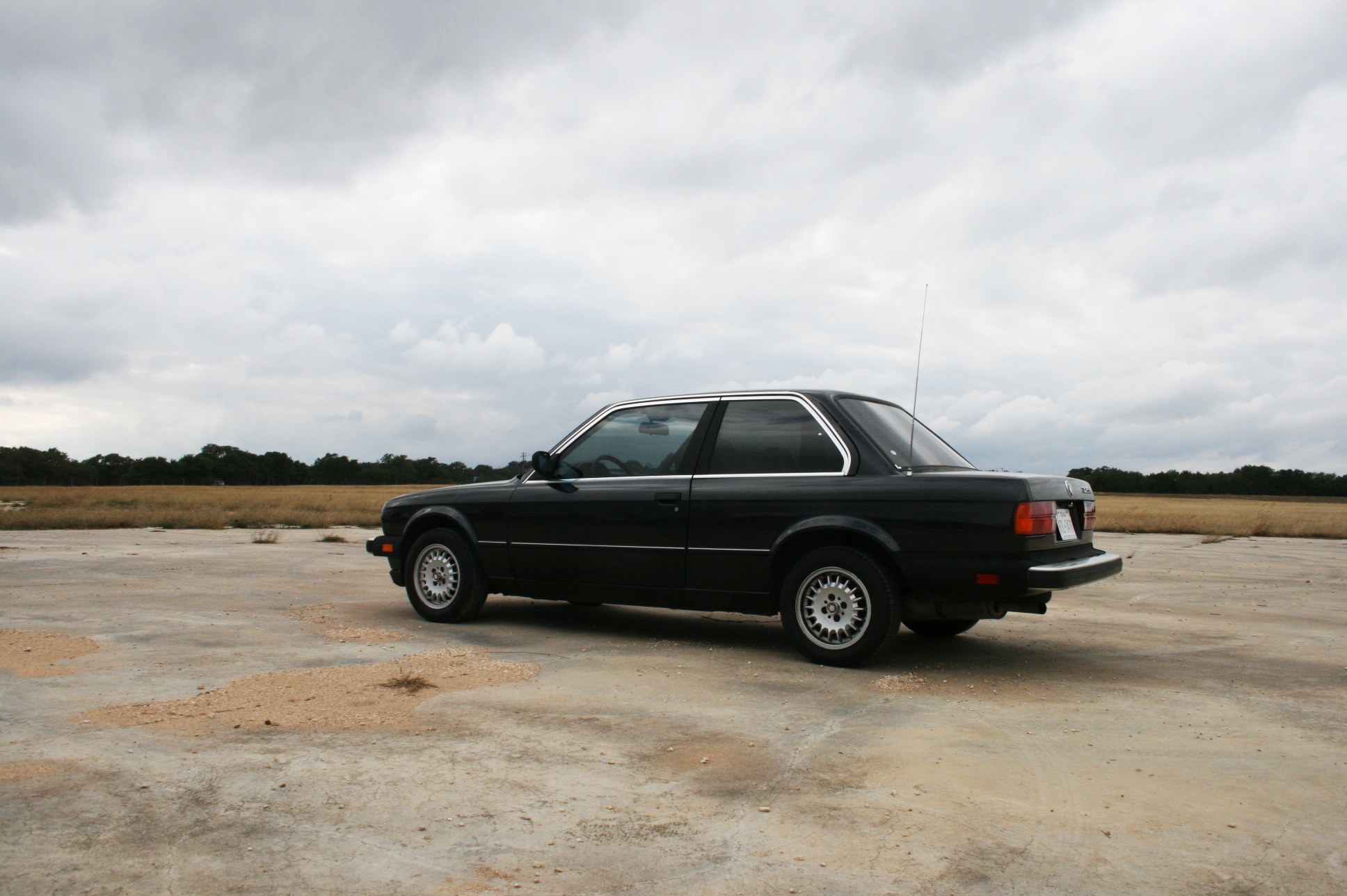
Despite all this, fun can still be had in the 325e. Quite a bit, actually. The engine has horsepower comparable to a modern economy car, like a Corolla or a Sentra, but with much more torque and the smoothness you’d expect from a German luxury car.
Basically, it moves rather nicely from a stop. Get past 2,000 RPM or so and the revs build slowly but steadily and with force, giving you a strong amount of pull all the way to that redline. The powerband may seem small on paper, but it feels bigger than it really is in practice. If you’ve ever driven a turbodiesel car, I can tell you this car feels pretty similar. Low power, lots of torque, low redline, even though it runs on gasoline. It’s kind of like a diesel car that runs on gasoline.
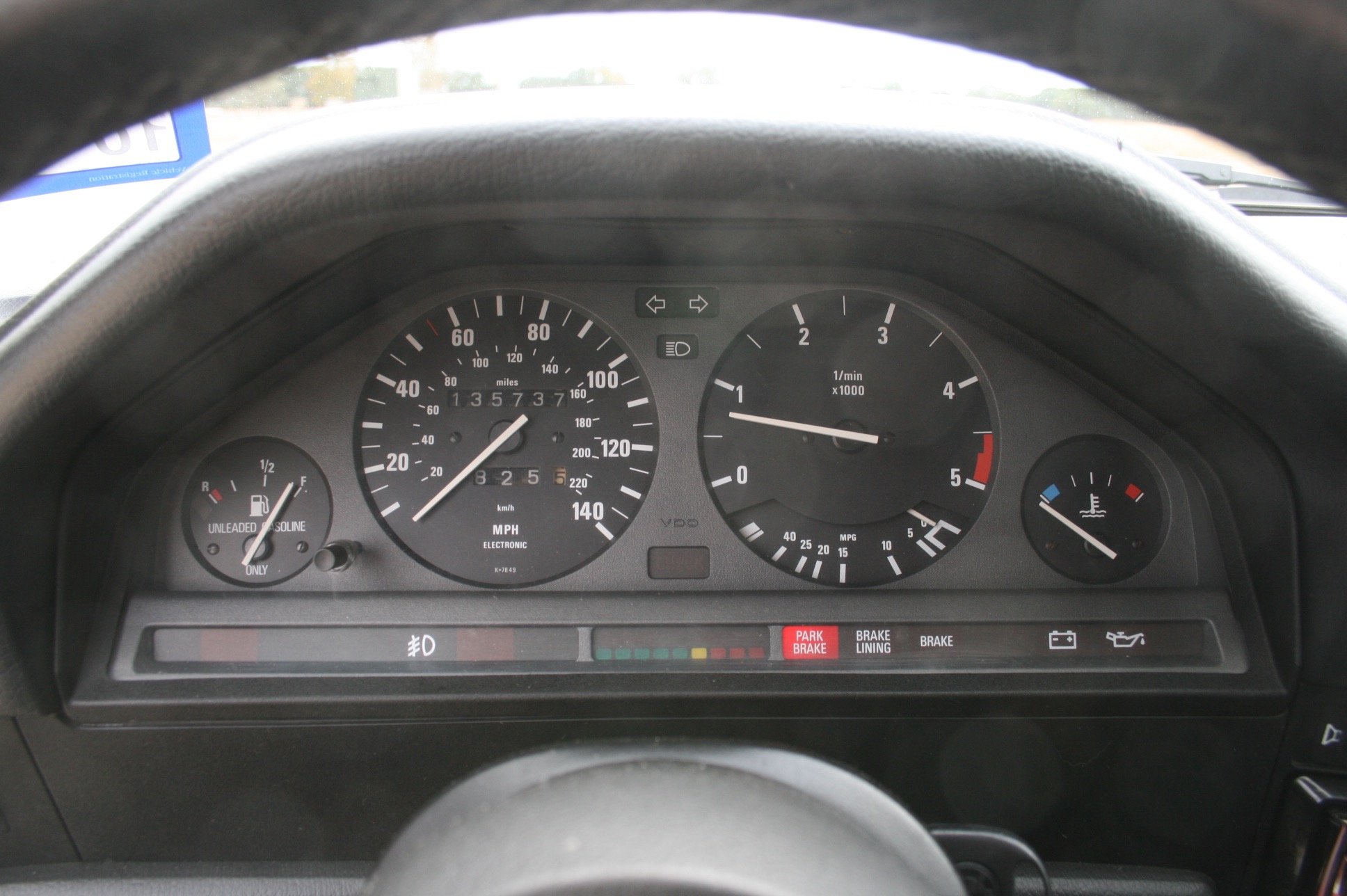
What an unusual tachometer.
It is very thoroughly a momentum car. Once you get it moving, the qualities that make the E30, any E30, begin to shine. It’s a rear-drive car in a small, balanced package, a size you almost can’t find anywhere today save for the BRZ/86 and Miata. The rack-and-pinion steering, despite having a too-tall ratio, offers a directness most modern electric systems can’t match. It’s predictable, easy to get the rear end out on when you want it to, and quickly able to recover from the same.
It may not rev to obscene levels, but when it does get up to speed on the right road, it’s a blast in the hands of the kind of driver who doesn’t have to depend on modern nannies like ABS and traction control — it just takes a bit longer to get there than an M3 or a 325is might.
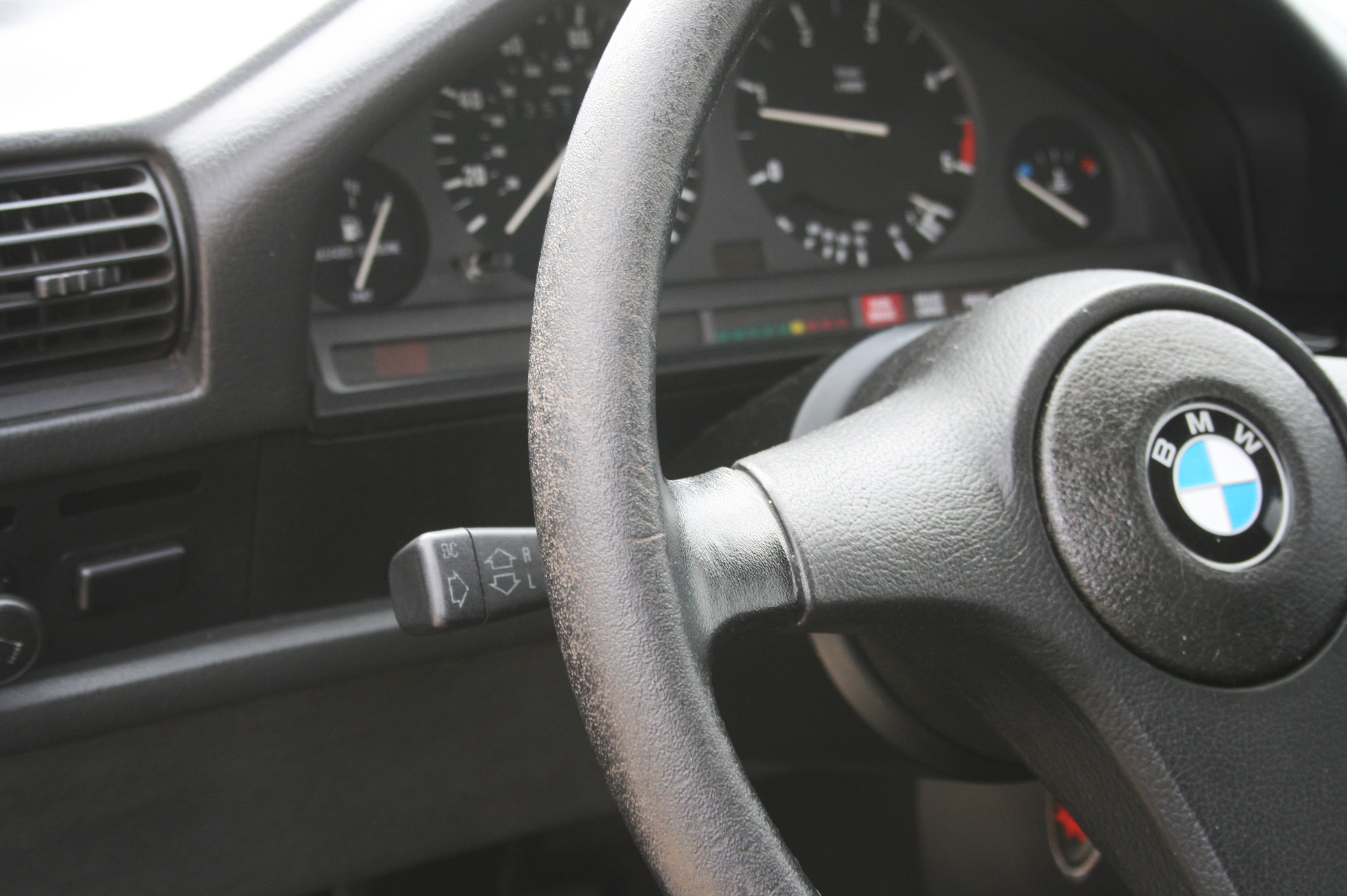
I have no idea what that lever does.
Speed, like everything else in life, feels better when you’ve had to earn it.
I drive this car almost exclusively around town, on short errands and weekend jaunts. It doesn’t see a ton of highway duty, but it will do 145km/h+ on the high-speed Texas State Highway 130 just fine. You just need to call your shots carefully on the highway on-ramps is all.
In normal driving, I’m often surprised at how easily I can outpace, say, a modern economy car or a small crossover when I try. Is it slow? By modern standards, yes, though it will outrun a Hyundai Ioniq, apparently.
But I’ve never found it to be dangerously so, or completely unable to get it out of the hole when I need it to. If you’re the kind of person who dreams of blitzing Hellcats and Lambos at the stoplight, this clearly isn’t for you — but as an everyday car, it’s surprisingly good at what it is meant to do.
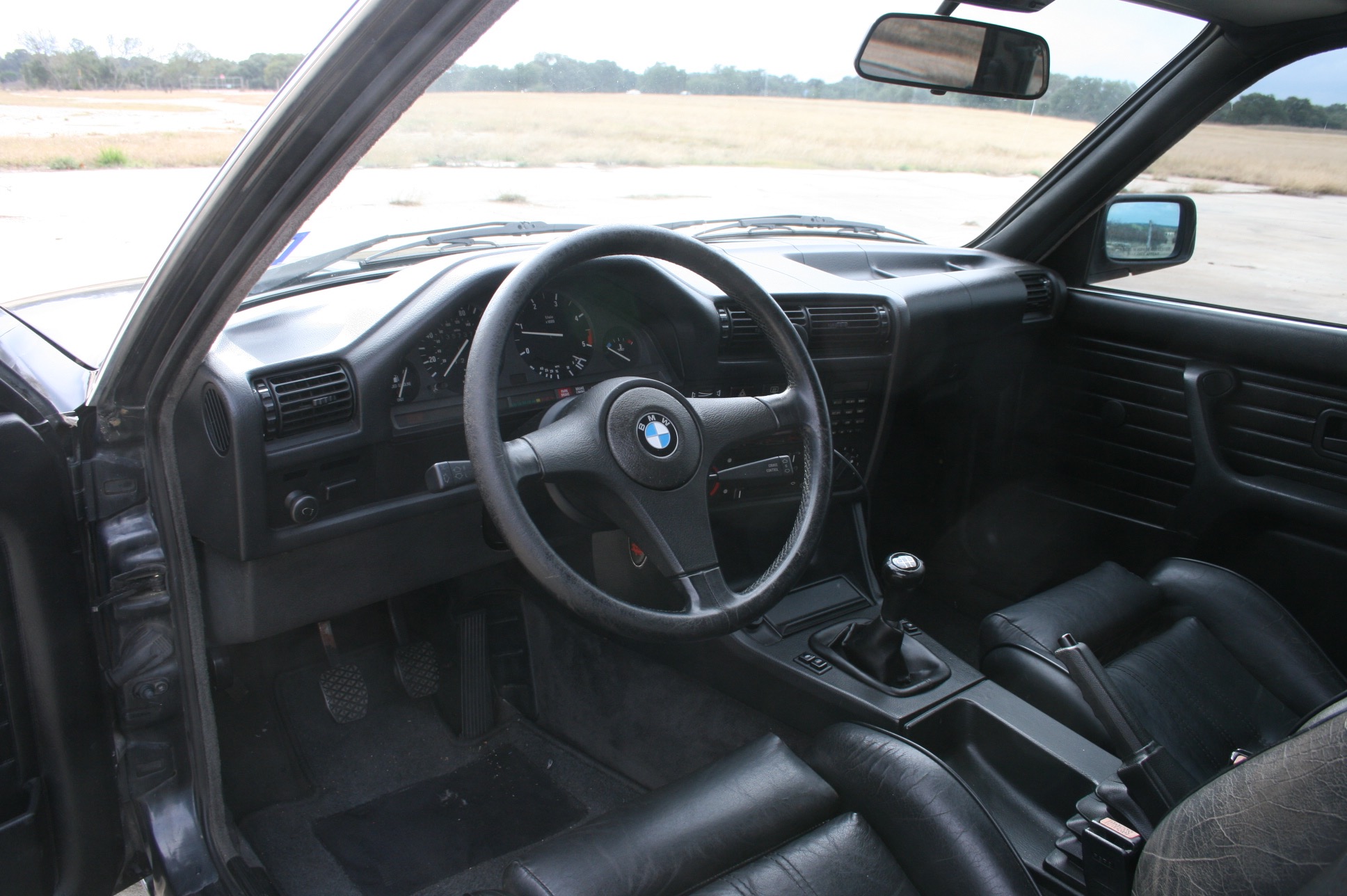
And inside, it’s all class, like you’d expect a German junior executive car to be at the time. The trip computer works fantastically. The seats are nicely bolstered without killing your spine, which is more than I can say for a lot of modern sport seats. There’s no annoying screen to distract the driver.
When I crank up some synthwave and open the sunroof on a sunny day, and get it on a good back road, I find myself living the ’80s dream. It’s like Reagan never died in there, and his love trickles down into your gearhead heart and makes you remember how good analogue-feeling cars can be. Granted, this car is quite digital, especially compared to something like a 2002, but its driving experience is not.
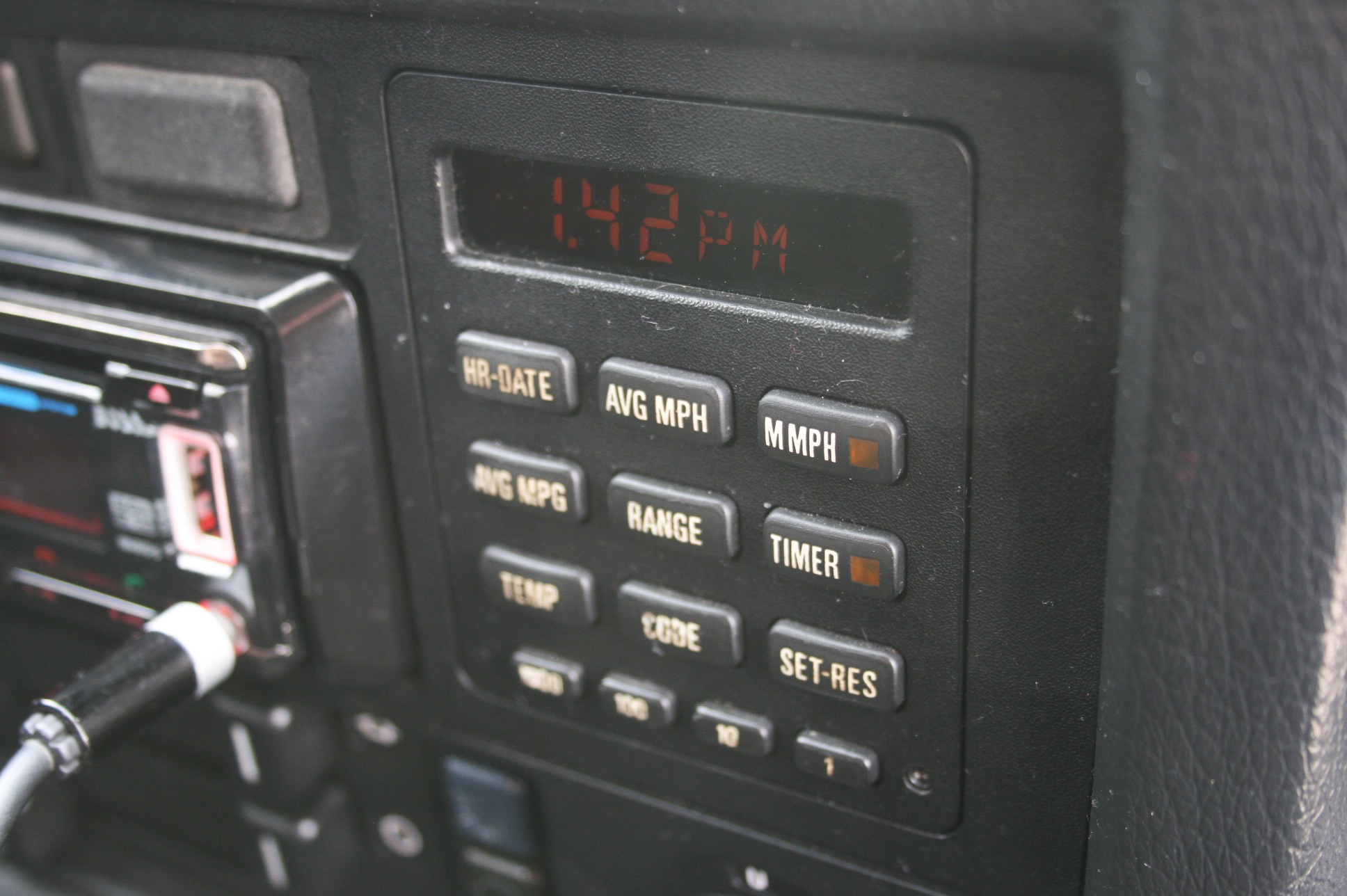
This was some real high-tech shit back in the day.
The other advantage to the 325e is that, since it is less loved and sought after than a 325i, it not only tends to be cheaper but also nicer, less prone to being beaten on by autocrossers and amateur racers. I got this for a little under $US3,000 ($3,906) and have spent a couple hundred on parts and repairs in the subsequent months; a 325i or 325is in comparable shape would probably be closer to $US10,000 ($13,020), which frankly I think is a little much for a 30-year-old BMW that happened to have been fairly common.
Tuners over the years have found ways to mitigate the Eta’s relative lack of power, like building it into the Super Eta engine, which adds parts from the 325i’s motor for more power and a higher redline.
Me, I don’t have much desire to do a lot in the way of mods, save for maybe a quicker steering rack from an E36 or a Z3. This car does everything I wanted it to. It’s a fun, capable daily-driver with superb handling and ’80s charm. And while it probably can’t be fixed with a 10mm wrench and swear words like an NA Miata can, wrenching on it hasn’t given me too much trouble. More than anything else, under the right circumstances, it provides a real kind of old-school driving euphoria.
Also, it may have an exhaust leak, which could contribute to that euphoria in some way. I am not sure.
So don’t immediately write off the 325e if you find one in decent shape out there, especially if it has a stick and the limited slip. This isn’t an engine for hardcore power fiends, but it’s better than people think it is. It could be exactly what you’re looking for — you’ll never know until you try.

